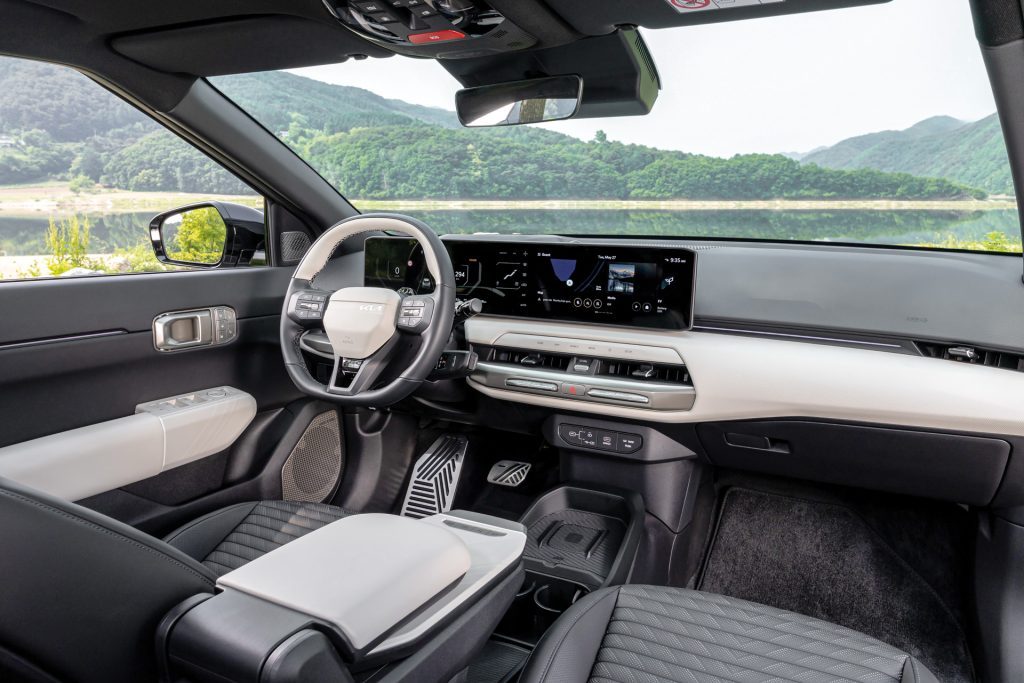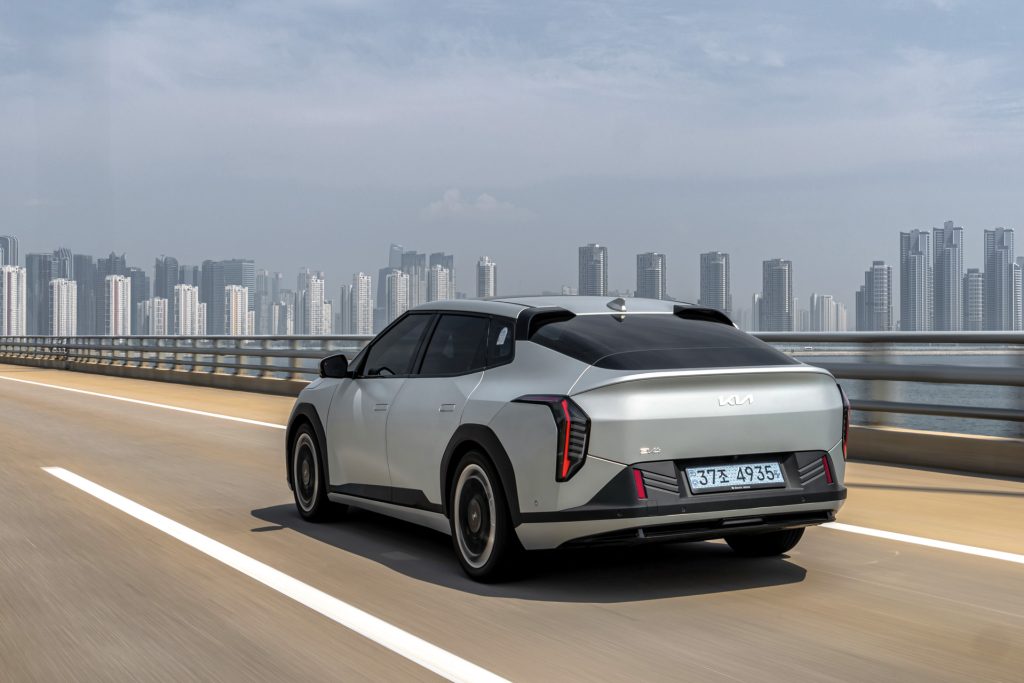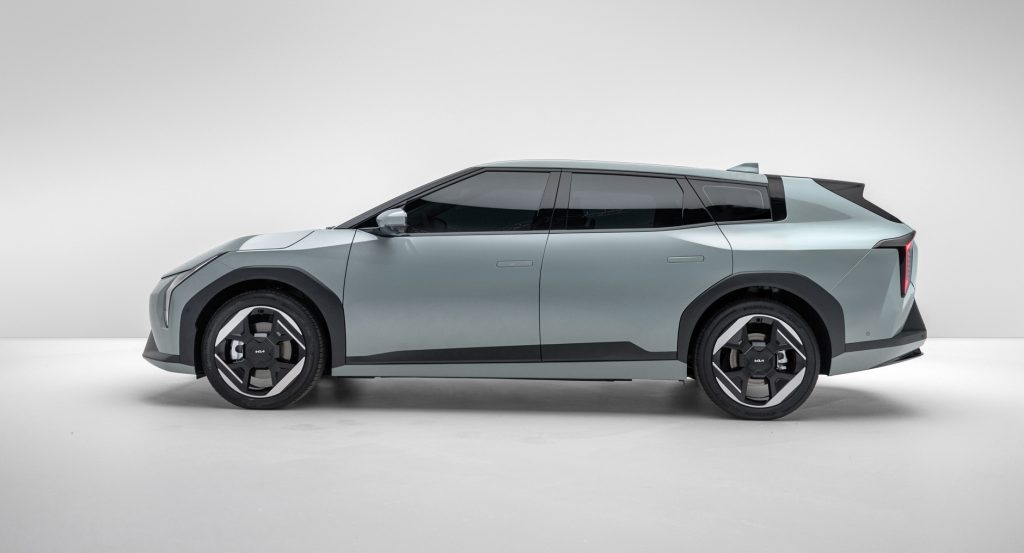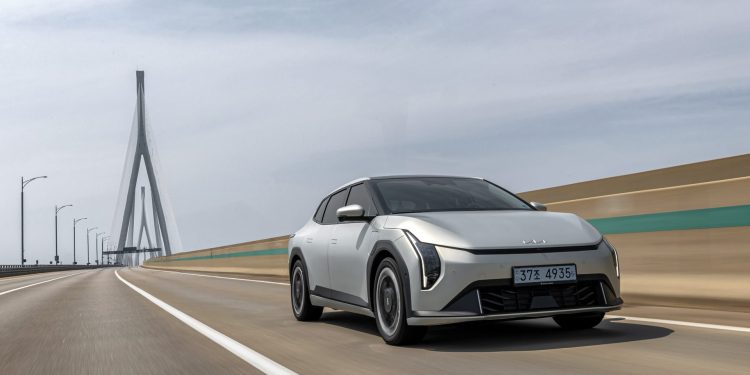2025 Kia EV4 – First Drive
Words: Richard Edwards | Photos: KIA
I made a mistake. I often do. But this one is specific to today’s vehicle first drive. When I checked out a Kia EV4 prototype recently I basically called it a sedan version of the fantastic little EV3. I was wrong. Sure, the EV4 sits on the same 400V E-GMP architecture, but that is about where the similarities end. It is substantially bigger, and built with a more premium focus than the functional 3.
Range, battery and platform
Kia says the EV4 could be offered here with two battery options: a 58kWh unit and an 81kWh pack, both utilising NMC chemistry for better energy density and lighter weight compared with LFP rivals. The larger battery claims up to 630km of WLTP range, and that feels believable after a long day driving on twisty and hilly Korean roads. Our test car, with 62 per cent charge, showed over 370km remaining; the kind of real-world figure that makes planning long trips a non-issue. Efficiency is aided by a drag coefficient of 0.23, achieved through flush-fit handles, a narrow frontal area and careful sculpting of the rear end.
Charging rates are 100kW for the 58kWh model and 135kW for the 81kWh version. Not top-tier, but good enough for a 10-80 per cent top-up in around 30 minutes, with Kia generally boasting strong charging curves. AC charging is supported at 11kW, enabling full overnight replenishment with a home wallbox.

Styling, practicality and cabin feel
The EV4 makes a strong design impression. Kia’s “Opposites United” styling brings sharp surfacing and a squat, confident stance. While technically a sedan, it leans toward fastback territory. The front-end treatment is angular, modern and flanked by the brand’s latest pixelated LED light signatures. There’s no frunk as front-wheel drive packaging takes priority but a large boot and fold-flat seats compensate.
The tailgate itself is electric and despite a slightly narrow aperture, the boot is deep with a decent 490L of volume. Some items simply won’t make it through the opening but that’s a bigger problem with most sedans. There are handy switches in the boot to drop the rear seats.
Slide into the cabin and there’s an immediate sense of progress. The interior feels great, with the brand favouring recycled materials with a stone-textured finish, ambient lighting and soft-touch panels. It feels more premium than you might expect for a mainstream brand.
Up front, a wide glass panel houses three displays: a driver cluster, a central infotainment screen, and a dedicated climate touch panel. There’s almost 40 inches of screen real estate. Graphics are clean, snappy and backed by Kia’s updated infotainment system, which includes navigation, Bluetooth and wireless ACP and AA. Kia’s new app also allows for remote vehicle control, and Bluetooth key functionality is expected in future updates.
Storage is well thought out, with a floating centre console featuring cup holders, a tray and a 100W USB-C charging port – one of the highest outputs we’ve seen in a mainstream EV. Kia’s vehicle-to-load (V2L) system is built in too, with a 3.4kW external power output via an adapter, plus an onboard three-pin plug in the cabin. The platform also supports vehicle-to-home (V2H) and vehicle-to-grid (V2G) capability, though deployment will depend on local infrastructure and regulations.
Rear-seat comfort is generally good, with strong legroom and supportive cushions. Taller passengers may find headroom a bit tight, because of the sloping roofline. The rear bench also includes twin USB-C ports and ISOFIX points. A panoramic sunroof is optional in some markets, but may further reduce rear headroom.

Driving impressions and tech
On the road, the EV4 impresses. Our test car featured the larger 81kWh battery and single front-mounted motor delivering 150kW and 283Nm of torque. That’s good for 0–100km/h in 7.7 seconds or 7.4 seconds for the lighter, smaller battery variant. Drive modes (Eco, Normal, Sport, and Snow) alter throttle response, steering weight and regen tuning, offering a surprisingly customisable experience.
Ride comfort is a standout. Kia’s engineers have struck a mature balance between compliance and control. Even on bumpy rural roads, the EV4 remained composed, refined, and quiet. Cabin insulation is excellent (despite the occasional Korean navigation interruption) and tyre and wind noise are well suppressed.
Steering is light in Eco and Normal but firms up nicely in Sport. The regen system offers three manual settings via paddles, plus an ‘i-Pedal’ one-pedal mode and a smart adaptive setting that adjusts regen intensity based on traffic ahead and downhill gradients. Braking is handled by four-wheel discs, and the transition between regen and friction braking is smooth.
Driver assistance is also top-shelf. Adaptive cruise control, along with the lane keep assist system, are both particularly refined, easing highway driving. Combined with the plush ride and long range, it makes the EV4 an ideal intercity cruiser.
So, is the Kia EV4 the new benchmark for electric sedans? It depends on what you want. If you’re after all-out tech and performance, Tesla’s Model 3 still rules the roost. But for those seeking refinement, comfort and thoughtful features in a distinctive, practical package, with an impressive range, the EV4 is a quiet revolution.
Personally, I’d still opt for the versatility of an EV5 or the upright charm of the EV3. But if a low-slung, stylish electric sedan is what you’re after, the EV4 might just be the smartest sleeper hit in Kia’s growing line-up.

KIA EV4 Long ROOF
What if? No this is not the EV4 wagon, but rather another Schultz rendering of a potential new variant. We reckon it has legs and the world needs more wagons.
Kia EV4
$TBA / 12.4kWh/100km / 0g/km
0-100 km/h 7.7s
Motor 150kW / 283Nm
Battery / Range 81kWh / 630km
Drivetrain single-speed auto / FWD
Weight 1900kg





